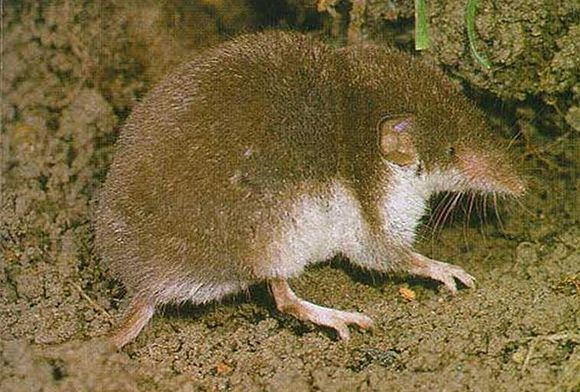1.The Pygmy Hog (Porcula salvania)

It is the world’s smallest wild pig, with adults weighing only 8 kgs. This species constructs a nest throughout the year. It is one of the most useful indicators of the management status of grassland habitats. The grasslands where the pygmy hog resides are crucial for the survival of other endangered species such as Indian Rhinoceros (Rhinoceros unicornis), Swamp Deer (Cervus duvauceli), Wild Buffalo (Bubalus arnee), Hispid Hare (Caprolagus hispidus), Bengal Florican (Eupodotis bengalensis) and Swamp Francolin (Francolinus gularis). In 1996, a captive-breeding programme of the species was initiated in Assam, and some hogs were reintroduced in Sonai Rupai area in 2009.
* Pygmy hog-sucking Louse (Haematopinus oliveri), a parasite that feeds only on Pygmy Hogs will also fall in the same risk category of critically endangered as its survival is linked to that of the host species.
Habitat: Relatively undisturbed, tall ‘terai’ grasslands.
Distribution: Formerly, the species was more widely distributed along the southern Himalayan foothills but now is restricted to only a single remnant population in Manas Wildlife Sanctuary and its buffer reserves.
Threats: The main threats are loss and degradation of grasslands, dry-season burning, livestock grazing and afforestation of grasslands. Hunting is also a threat to the remnant populations.
2. Andaman White-toothed Shrew (Crocidura andamanensis), Jenkin’s Andaman Spiny Shrew (Crocidura jenkinsi) & Nicobar White-tailed Shrew (Crocidura nicobarica)

All are endemic to India.
They are usually active by twilight or in the night and have specialized habitat requirements.
Habitat: Leaf litter and rock crevices.
Distribution: The Andaman White-toothed Shrew is found on Mount Harriet in the South
Andaman Islands. The Jenkin’s Andaman Spiny Shrew is found on Wright Myo and Mount Harriet in the South Andaman Islands.
The Nicobar White-tailed Shrew (Crocidura nicobarica) is found in the southern tip of Greater Nicobar Island and is also recorded in the area extending from the Campbell Bay National Park to the Galathea River in the Andaman and Nicobar Islands.
Threats: Habitat loss due to selective logging, natural disasters such as the tsunami and drastic weather changes.
3. Kondana Rat (Millardia kondana)

It is a nocturnal burrowing rodent that is found only in India. It is sometimes known to build nests.
Habitat: Tropical and subtropical dry deciduous forests and tropical scrub.
Distribution: Known only from the small Sinhagarh Plateau (about one km²), near Pune in Maharashtra. Reported from an elevation of about 1,270 m above mean sea level.
Threats: Major threats are habitat loss, overgrazing of vegetation and disturbance from tourism and recreational activities
4. The Large Rock Rat or Elvira Rat (Cremnomys elvira)

It is a medium sized, nocturnal and burrowing rodent that is endemic to India.
Habitat: Tropical dry deciduous shrubland forest, seen in rocky areas.
Distribution: Known only from Eastern Ghats of Tamil Nadu. Recorded from an elevation of about 600 m above mean sea level.
Threats: Major threats are habitat loss, conversion of forests and fuel wood collection.
5.The Namdapha Flying Squirrel (Biswamoyopterus biswasi)

It is a unique (the only one in its genus) flying squirrel that is restricted to a single valley in the Namdapha Tiger Reserve in Arunachal Pradesh.
Habitat: Tropical forest.
Distribution: Found only in Namdapha Tiger Reserve in Arunachal Pradesh.
Threats: Hunted for food.
6.The Malabar Civet (Viverra civettina)

It is considered to be one of the world’s rarest mammals. It is endemic to India and was first reported from Travancore, Kerala. It is nocturnal in nature and found exclusively in the Western Ghats.
Habitat: Wooded plains and hill slopes of evergreen rainforests.
Distribution: Western Ghats.
Threats: Deforestation and commercial plantations are major threats.
7. The Sumatran Rhinoceros (Dicerorhinus sumatrensis)

It is the smallest and most endangered of the five rhinoceros species. It is now thought to be regionally extinct in India, though it once occurred in the foothills of the Himalayas and north-east India.The Javan Rhinoceros (Rhinoceros sondaicus) is also believed to be extinct in India and only a small number survive in Java and Vietnam.
